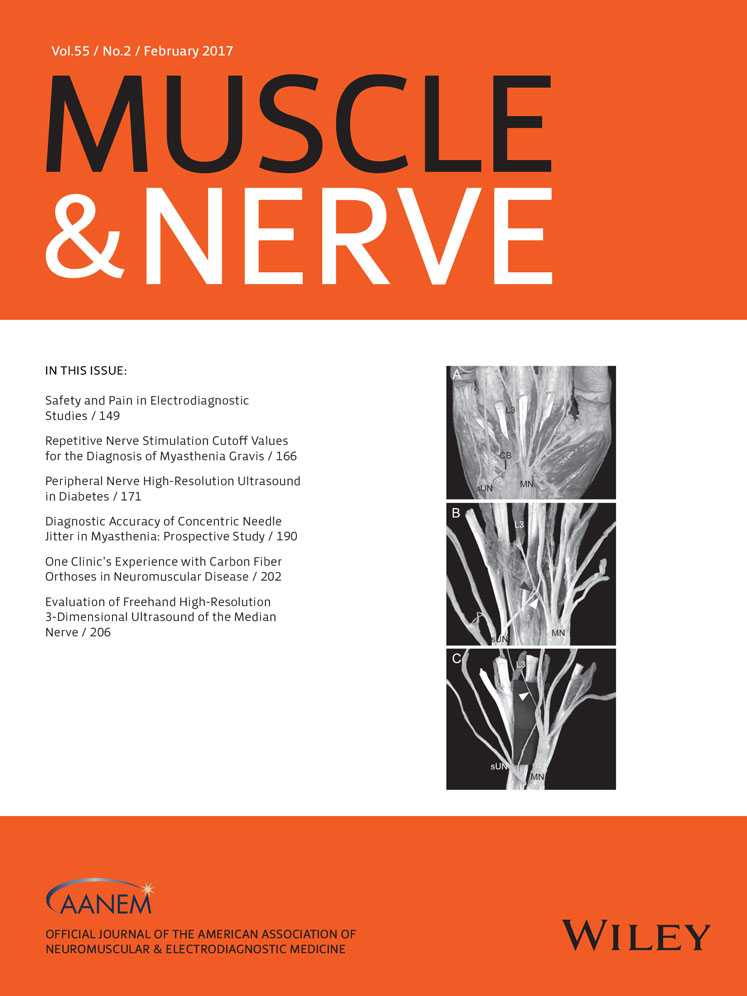Giant nerves in chronic inflammatory polyradiculoneuropathy
Conflicts of Interest: The authors report no competing interests.
ABSTRACT
Introduction: Nerve enlargement (NE) is described in inflammatory and inherited neuropathies. It is commonly multifocal and moderate in the former and homogeneous and generalized in the latter. We describe 4 cases of massive NE in inflammatory neuropathies. Methods: Patients presented with symptoms of polyneuropathy that progressed over months to years. Nerve conduction studies (NCS), laboratory analysis, nerve MRI, and nerve ultrasound were performed. Results: NCS revealed demyelinating neuropathy in all with multifocal conduction blocks or increased terminal latency indices. MRI/ultrasound revealed extensive NE in the roots and nerves. Detailed diagnostics including biopsies, positron emission tomography-computed tomography, and genetic testing revealed no other pathology. Chronic inflammatory demyelinating polyneuropathy variants were diagnosed in all, and immunotherapies were successfully initiated. Conclusions: MRI and ultrasound contributed to diagnosis and therapy. All patients had giant NE in common, which strongly suggested inherited neuropathy. However, the final diagnosis was inflammatory neuropathy. Impressive NE can occur in immune-mediated neuropathies and should be carefully differentiated from inherited neuropathies. Muscle Nerve 55: 285–289, 2017




